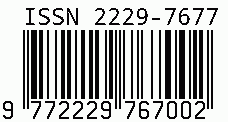
International Journal on Science and Technology
E-ISSN: 2229-7677
•
Impact Factor: 9.88
A Widely Indexed Open Access Peer Reviewed Multidisciplinary Bi-monthly Scholarly International Journal
Plagiarism is checked by the leading plagiarism checker
Call for Paper
Volume 16 Issue 4
October-December 2025
Indexing Partners



















Eye Disease Classification and Detection using Deep Learning
| Author(s) | Mr. Surya Prakash Jella, Dr. K. Shahu Chatrapati |
|---|---|
| Country | India |
| Abstract | Diabetic retinopathy, glaucoma, and cataract are the most common eye diseases that are difficult to detect manually in their early stages. If these diseases are not detected early, they can cause permanent vision loss. Manual detection of eye diseases may result in incorrect diagnoses. This project aims to build an efficient model for eye disease classification and detection using deep learning techniques. Machine learning algorithms were previously used for eye disease classification and detection. Support vector machines, convolutional neural networks, and ResNet50 were previously used for eye disease detection. These existing models are complex and work efficiently only for small datasets. The primary objective of this project is to predict whether a person has eye disease or not based on his or her retinal fundus imaging data. The proposed system will use the Visual Geometry Group 19 deep learning algorithm for eye disease classification and detection. The proposed system is to enhance the test accuracy and work with larger datasets. The proposed VGG19 model achieved a high accuracy of 94%, demonstrating its effectiveness in capturing relevant features for distinguishing between diabetic retinopathy, glaucoma, and cataract eye diseases. The proposed system results in an increase in early detection rates, ultimately leading to better patient management. |
| Keywords | Diabetic Retinopathy, Glaucoma, Cataract, Visual Geometry Group 19, Deep Learning |
| Field | Computer > Artificial Intelligence / Simulation / Virtual Reality |
| Published In | Volume 16, Issue 3, July-September 2025 |
| Published On | 2025-08-03 |
| DOI | https://doi.org/10.71097/IJSAT.v16.i3.7508 |
| Short DOI | https://doi.org/g9vzgh |
Share this


CrossRef DOI is assigned to each research paper published in our journal.
IJSAT DOI prefix is
10.71097/IJSAT
Downloads
All research papers published on this website are licensed under Creative Commons Attribution-ShareAlike 4.0 International License, and all rights belong to their respective authors/researchers.

